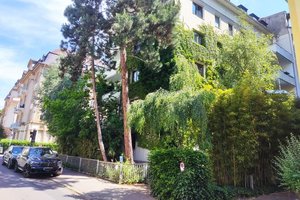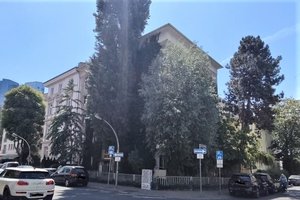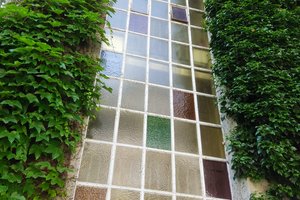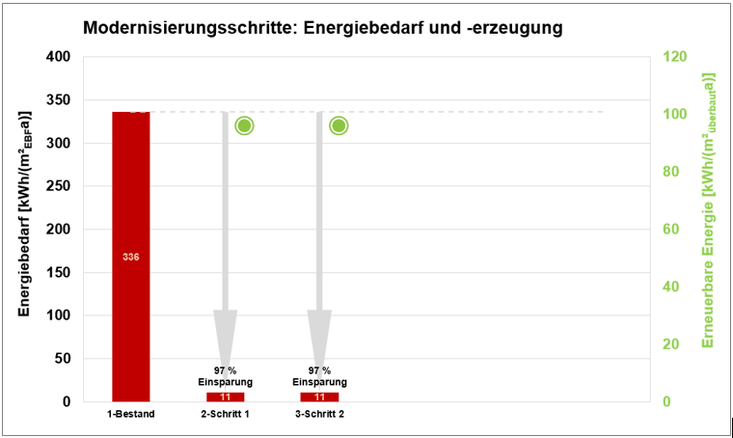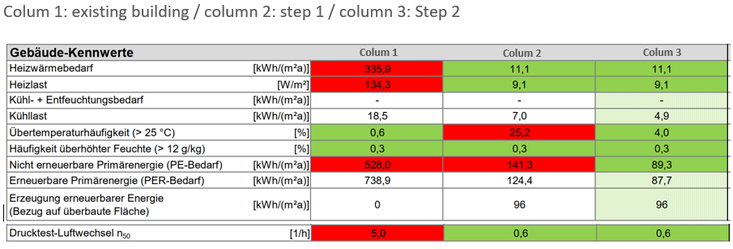Case Studies
KeHoWeg7
Frankfurt, Germany, Germany
Code: CS34
Original situation
KeHoWeg 75 is a Multi-family building with six floors (including ground floor) and an unheated basement. It is used as a residential building with eleven apartments and a total Treated Floor Area (TFA) of 940m2. Each apartment has a balcony of reinforced concrete slab. The building has been constructed in 1955 with reinforced concrete and ytong blocks. The inclined roof is made of wood and tiles. The unheated basement rises slightly over the ground´s altitude. The windows and doors are aluminium and steel framed double glazed, dated from 1979.
There is an elevator and a de-centralised gas-heating system dated from 1955, which operate with typical maintenance and minimum damages until today. The lifting capacity of the elevator is 250kg (3 people). The distribution of hot water within every apartment is implemented with individual hot water pipes which connect both the kitchen and the bathroom. Every apartment has three (3) tapping points for domestic hot water (2 in the bathroom and 1 in the kitchen). There are no cooling units, PV or Solar domestic hot water panels installed in the building.
The building is surrounded by a lot of deciduous trees and a number of buildings, which have a height of 15-25m.On its east side it borders on a neighbouring residential building.
Renovation approach
The retrofit measures to achieve Passive House Standard have been summarized in a Retrofit plan (ERP) which contains further information on component qualities and energy savings, order of measures and economy.
Modernisation proposal
KeHoWeg 75 energy efficiency standard aimed is the Passive House Classic standard and the proposed renovation approach includes:
• Exterior insulation of the thermal envelope (exterior walls, roof, basement ceiling). Special care and consideration should be given to thermal bridge reduced design (e.g. installation of windows and doors, punctual penetration or interruptions of insulation layer). The balconies are going to be demolished and replaced by self-supporting balconies that will be punctually fixed on the building.
• Installation of certified Passive House triple glazed windows and doors (special care will be given to the airtightness layer and the minimization of the installation thermal bridge of the above mentioned components)
• Installation of Passive House certified ventilation units with heat recovery. These units will provide the necessary fresh air to the building.
• Installation of a centralized heat pump (air source) for heating and domestic hot water inclusive storage. The heating is distributed via the existing radiators.
• Insulation of the hot water pipes where possible
• Installation of new energy efficient lift
Efficiency improvement
The table below shows the energy savings of the measures proposed in step 1: insulation of the thermal envelope, Passive House windows and doors, installation of mechanical ventilation unit with heat recovery and installation of PV modules. In Step 2 the generation for heating and domestic hot water will be provided by a heat pump and the elevator will be replaced by a more efficient one.
Key facts
Building typology
Multi family dwelling
Existing treated floor area (usable floor space)
902 m2
Building owner
Private
Consulting outphit partner
Passive House Institute
Project status
Planning phase
Contact

Berthold Kaufmann
Passive House Institute
Teléfono: +49 6151 826990
E-Mail: berthold.kaufmann@passiv.de

